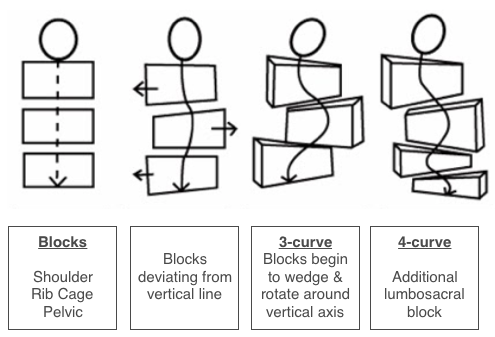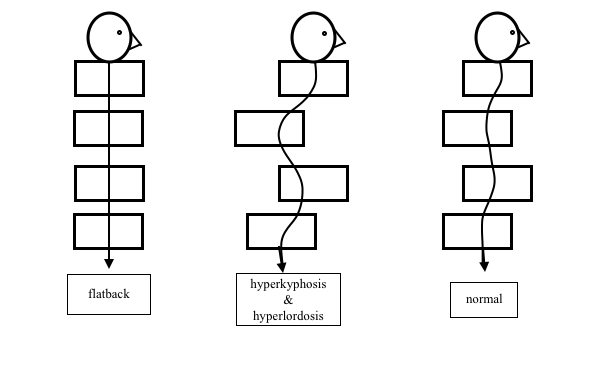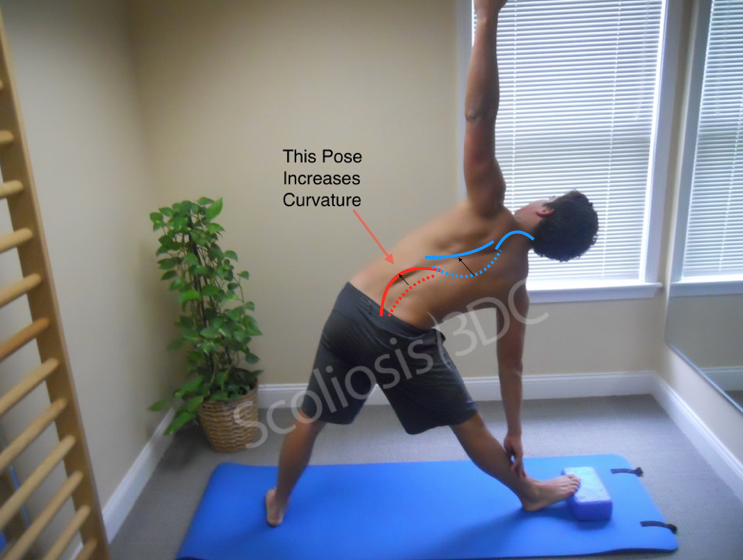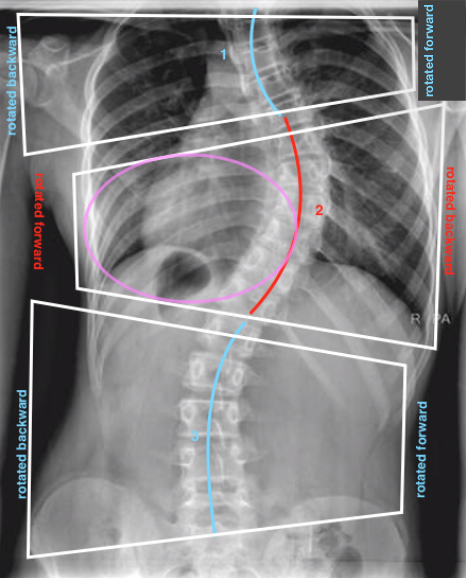Yoga and scoliosis – should scoliosis patients do yoga?
Over the years, yoga has been branded as a methodology and popular trend for scoliosis management and treatment. Today, yoga and scoliosis are commonly and positively associated with each other. At first glance it would make sense that stretching and strengthening could have a positive impact on the spine, especially with a yoga instructor that has in-depth knowledge of anatomy. It is important to remember that yoga as it is practiced today, was developed about 100 years ago (influenced by British colonies in India and Swedish gymnastics) for physical fitness – not for an asymmetric/scoliotic spine.
There are a variety of yoga poses that may be adapted to be safe for patients with scoliosis. However, this requires the patient to have an advanced understanding of their unique scoliosis, a knowledge of proper exercise principles and the physical capability to maintain good spinal alignment during exercises. However, there are healthcare treatments (i.e. Schroth method exercises) that are far more effective, safe, and designed specifically and individually for scoliosis and its multitude of complexities.
Yoga as a practice, is well-rounded to target and interweave the spirit, mind and body. It has been proven to have many benefits for health and wellness for those across the age continuum. Yoga is great because it can be adapted in so many ways to be tailored to a person’s individual style and needs. The problem with yoga and scoliosis treatment is that scoliosis is so complex that not even an advanced yogi working at a highly adapted practice would be able to provide a completely side-effect free training.
To understand why yoga and scoliosis do not mesh well together, it is important to have a basic understanding of the principles of scoliosis. According to the Augmented Lehnert-Schroth classification system, persons have either a 3-curve or 4-curve scoliosis. This system divides the body into 3 or 4 “body blocks,” respectively. When looking at a person from the back, those body blocks (the spinal segments) are shifted away from the midline (creating the curves). In addition, those body blocks are twisting in opposing directions. Refer to figure 1. for clarification. The narrow parts (concavities) of the blocks pictured below are rotating forward, and the thicker parts (convexities) of the blocks are rotating backwards.

In addition to each body block shifting away from the midline, and rotating in opposition to adjacent body blocks, the alignment of the spine from the side view also needs to be taken into account. With scoliosis, a “flatback” appearance is common (hypolordosis/hypokyphosis). The opposite is also possible with an increased curve backward in the upper back (hyperkyphosis) and an increased curve forward in the lower back (hyperlordosis). In addition, any combination of these can happen anywhere along the spine. Refer to figure 2.

The problem with yoga and scoliosis
It is true that certain yoga poses can have a positive effect on one of the 3 or 4 curves at a time. For example, in a 3-curve scoliosis with primary thoracic (upper back) curve to the right, triangle pose (as performed as pictured below) would help shift the thoracic curve in the correct direction. However, the lumbar curve would worsen in shift and rotation. Depending on the flexibility of the person, their sagittal plane may also be compromised.

When performed on the opposite side – triangle pose (as performed below), the lumbar curve improves in shift and rotation, but worsens in thoracic shift and rotation. And again may worsen the cervical curve, depending on head position.

A thoracic (upper back) curve may not extend through the entire thoracic spine. Simply twisting in opposition of the rotation in the thoracic spine is not specific enough to help “fix” scoliosis. We teach a more specific method called RAD (rotational angular breathing) which allows a person to unshift and untwist only the portion of the spine affected by the curve. It is specific to each person and their curve and must be taught by a certified practitioner. See Figure 5.

When treating or managing scoliosis, all curves should be addressed at the same time and in all planes (shift, rotation and sagittal alignment). This is to discourage increased flexibility in the so-called “wrong” direction for any of the curves. Because the spine already has a tendency to move in the wrong direction- you wouldn’t want to practice a pose (e.g. triangle pose) that encourages increased flexibility/strength in the wrong direction for one or more of the curves. Flexibility and strength should only be encouraged in the “correct” directions for all curves in all planes simultaneously. This is achieved through scoliosis-specific exercises that use isometrics (i.e. Schroth 3D exercises).
Movements that may worsen one or more curves at a time (even when promoting alignment of one of the curves) include side bending, twisting, forward flexing/folding of the trunk, hyperextending of the trunk (i.e. back bending), and side shifting to the wrong side. Many of the movements just mentioned are included in a majority of the most commonly used yoga poses. It is important to correct all curves in all planes at once and isometrically strengthen them there (not just gain flexibility). When strengthening of all core and back muscle groups that are affected by the scoliosis at once, you get optimal spinal alignment with neurological rewiring that is maintained during daily life (i.e. static and dynamic movements).
Yoga may appear to be correcting one curve in one plane at a time, but the adverse effects on the other curves outweigh the “benefits” of the yoga pose altogether. It does not correct for all curves in all planes at once which, is necessary to create the best and most correct change to the bony structures, overlaying musculature and neurological systems. Yoga also does not include RAD – which is necessary to make the specific spinal changes, specific to an individual’s curve pattern. Yoga is fine for a symmetrical spine – but simply put – it is not specific enough for the treatment or management of scoliosis. Unfortunately, for this reason – yoga and scoliosis do not pair well together.
Kimberly Kruzel, MS, OTR/L, RYT 200

